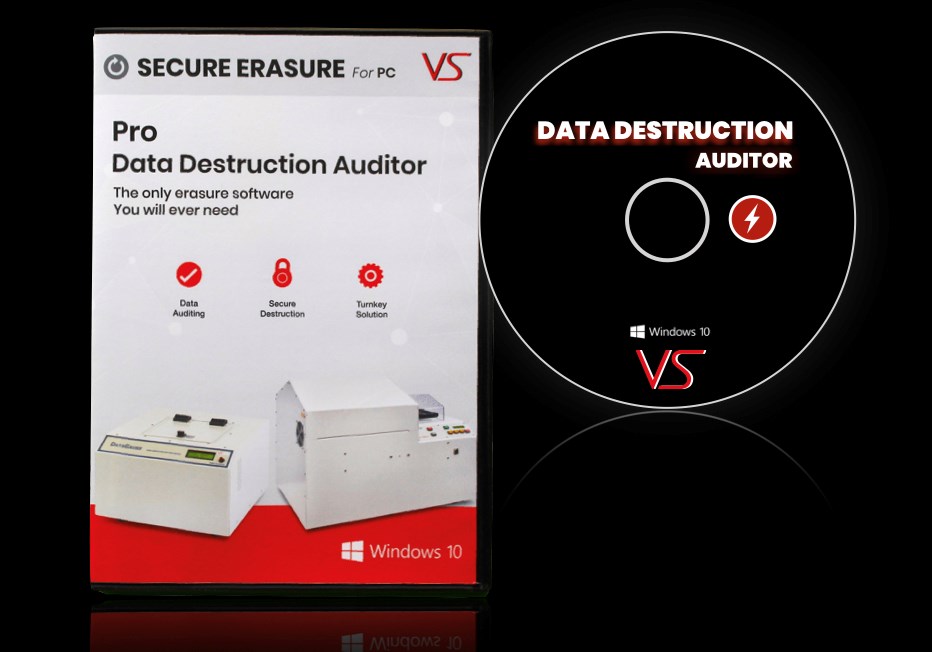Optimizing Cyber Security through Advanced Data Destruction Approaches
Optimizing Cyber Security through Advanced Data Destruction Approaches
Blog Article
The Relevance of Effective Information Damage Practices in Shielding Sensitive Details and Ensuring Computer System Safety And Security
In a period where data violations are significantly usual, the importance of effective data damage methods can not be overstated. Executing durable data damage techniques not just reduces these dangers yet additionally lines up with legal compliance demands, guaranteeing that companies support their credibility and foster client trust.
Recognizing Information Devastation
Recognizing data devastation is critical in today's digital landscape, where sensitive details can quickly be jeopardized. Effective information damage involves not just ensuring yet removing data that data is irretrievable through detailed techniques. This procedure is vital for organizations that handle personal customer information, copyright, or interior records, as any breach can cause extreme economic and reputational consequences.
Data damage incorporates numerous techniques, including shredding physical media, degaussing magnetic storage gadgets, and utilizing software-based remedies that overwrite information numerous times. Each method serves a certain objective and must align with the level of sensitivity of the details being gotten rid of. For instance, physical devastation is frequently chosen for hard disks containing highly private information, while software program approaches might be sufficient for much less delicate information.
Additionally, sticking to market standards and regulations, such as the General Information Defense Guideline (GDPR) or the Medical Insurance Mobility and Accountability Act (HIPAA), is necessary for compliance and to reduce legal threats. Organizations needs to develop a durable information destruction plan, train workers on finest practices, and regularly examine their treatments to guarantee that all sensitive details is thrown away firmly and successfully.
Dangers of Inadequate Practices
Insufficient information damage methods subject organizations to considerable dangers that can have significant repercussions. When sensitive information is not properly taken care of, it continues to be vulnerable to unauthorized accessibility, which can bring about information breaches and identity burglary. Such events not only endanger the protection of people yet likewise stain the organization's online reputation, resulting in a loss of client trust and prospective financial consequences.
Moreover, regulative conformity is increasingly strict in several industries. Failing to follow data damage regulations can lead to substantial fines and lawsuits versus organizations. These fines can stress funds and divert focus from core business operations.
Additionally, the abuse of recurring information can lead to intellectual property theft or business reconnaissance, threatening affordable benefits (data destruction). The impact of inadequate data destruction prolongs past instant economic losses; it can additionally cause lasting damages to brand integrity and market setting

Organizations need to identify that information security is not entirely concerning protecting against breaches; it also includes the liable administration of information throughout its lifecycle. Neglecting reliable information destruction procedures can have tragic implications, highlighting the need for durable actions to minimize these threats.
Best Practices for Information Devastation
Carrying out reliable data damage methods is crucial for securing sensitive info and keeping conformity with governing criteria. Organizations needs here are the findings to adopt a multi-faceted approach to ensure that information is irretrievable, consequently avoiding unauthorized accessibility and prospective breaches.
First, information ought to be categorized based upon sensitivity, permitting organizations to use ideal damage approaches customized to the level of threat. For electronic information, utilizing software-based data-wiping devices that adhere to industry criteria can successfully overwrite existing data. Physical devastation methods, such as shredding or degaussing, are crucial for tools that store delicate info, ensuring complete obliteration.
Developing a clear data retention plan is vital, describing for how long various sorts of info must be kept before damage. Routine audits of information storage systems are also necessary to determine unneeded or outdated Visit Website data requiring elimination.
Moreover, training staff members on the significance of information destruction and the particular methods to adhere to fosters a culture of safety within the company. Finally, preserving documents of data damage refines gives responsibility and sustains conformity with external laws and interior plans. By adhering to these best practices, organizations can dramatically mitigate the risks connected with information exposure.
Legal and Compliance Considerations

Failure to follow these guidelines can result in serious fines, including significant fines and reputational damage. Organizations has to carry out a durable data damage plan that lines up with these legal structures and gives clear standards on the proper techniques of data disposal, whether physical shredding or electronic cleaning.
In addition, maintaining documentation of data damage tasks is crucial for demonstrating compliance during audits or evaluations. By prioritizing legal and compliance factors to consider, companies can boost their data security position and foster depend on with stakeholders and customers, inevitably contributing to a more protected information monitoring environment.
Benefits of Effective Data Devastation
Effective information devastation practices expand beyond plain compliance; they supply considerable benefits to companies that prioritize them. By ensuring that sensitive information is irretrievably destroyed, organizations minimize the threat of information violations and the prospective monetary consequences connected with them. This positive technique not only safeguards against unauthorized gain access to however likewise improves the general dependability of the organization in the eyes of clients and stakeholders.
Implementing robust information destruction approaches, such as physical devastation of storage space gadgets or innovative data cleaning techniques, adds to the strengthening of an organization's cybersecurity posture. data destruction. It decreases the probability of copyright theft and shields exclusive information, therefore keeping an one-upmanship in the market
Final Thought
In verdict, efficient data destruction techniques are essential for guarding delicate info and enhancing total computer system safety. Eventually, a commitment to durable information destruction strategies cultivates a culture of duty, consequently enhancing an organization's cybersecurity pose and maintaining customer depend on.

Report this page